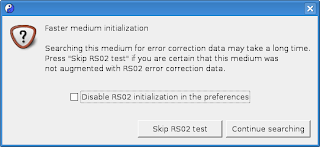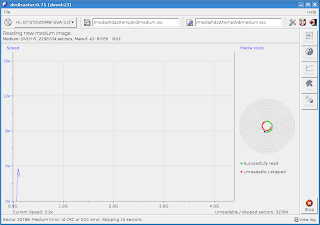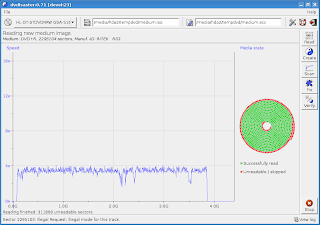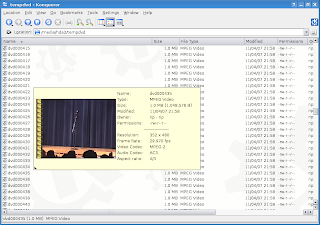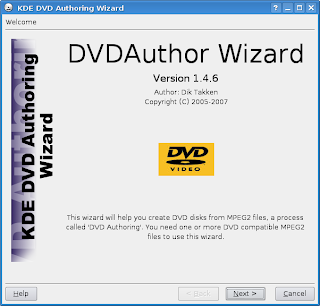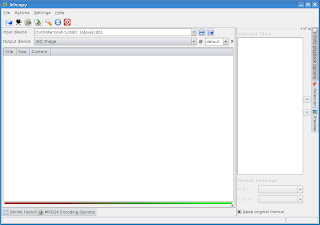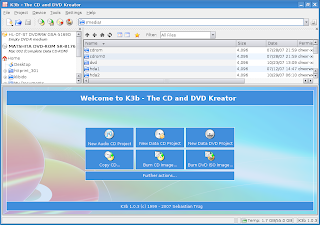No this post is not about plumbing or
smoking. This is about the pipes used in GNU/Linux and other
operating systems.
A Couple of Notes:
This article is about using
redirection, pipes and named pipes in a command shell on a system
running GNU/Linux. If you are not interested in command line use, or
if you are not interested in using GNU/Linux, please do not bother to
make comments about your lack of interest in such things. Comments
about how much better other operating systems are, or how outdated
command line mode is, will not be posted. I am familiar with, and
use, many operating systems. This will not become a forum for arguing
the benefits of other operating system. If you want to post a comment
that describes a similar method of piping input or output for other
operating systems, feel free. Keep it civil and on topic.
Many of the everyday electronic items
we now use are running some form of open source software. This allows
the system to be modified as desired, or needed, by the user. Most
often I find that these items are running a version of GNU/Linux.
Anytime I get a new electronic device, I check to see what operating
system is running, and what access methods are available
Back to the Pipes:
There are three primary methods to
change the standard input, named stdin, and standard output, named
stdout, that are commonly used in GNU/Linux operating systems. These
are redirection, pipes and named pipes. Is redirection a pipe or is a
pipe redirection? In most articles, they consider a pipe to be
redirection. I believe that redirection using the < or >
symbols is a one way pipe. You are piping the input or output of the
command to something other than stdin or stdout. However, in most
cases, you will see the use of < or > referred to as
redirection and the use of | or a named pipe FIFO referred to as a
pipe. I follow that convention most of the time. However, I call
redirection a pipe more often than I call a pipe redirection.
Many text mode commands have default
output and input devices. Often the default output device is stdout
and this is usually directed to the screen, or a window on the
screen. The default input device is usually stdin and is most often
the keyboard. Both of these, as well as another device, called
standard error or stderr, can be redirected to other devices
including files or printers.
In our example below, the file
/tmp/pipe1, is a named pipe FIFO. Output to it is from the Cat
command using a redirection with the > symbol. The default output
device for the cat command is stdout so our use of the redirection
simply changes the output device to the file, which happens to be a
FIFO. This redirection is the first pipe in the example command line.
The second pipe used in the example
below is referred to as, simply enough, a pipe and is designated by
the vertical bar symbol. The normal function of a pipe is to connect
the stdout of the command to the left, to the stdin of the command to
the right. It also causes both commands to run at the same time.
However, not all commands, by default, accept their input from stdin
or send their output to stdout. Ftpput, as used in the example, is
such a command. Ftpput does not have a default input device, it must
be given an input file or device. More on that in a minute. We still
want the Ftpput command to run at the same time as the cat command.
The pipe is being used to make that happen.
As mentioned above, not all programs,
or commands, have a default input or output. Some, such as ftpput,
must be given a file or device to get input from or send output to.
In some cases stdin and stdout can still be used. For example, the
ftpput command will accept input from stdin two different ways.
First, the - symbol can be used in place of the input file name. The
- symbol is used by many programs to represent stdin or stdout,
depending on where it is used in the command line. In the example, we
could use this command line instead of the one given:
#cat (20130908_1916_R*)|ftpput -v
-u(user name) -p(password) (192.168.1.203) ("/Home
Public/Shows/Actual Show Name and Episode.mpg") -
And it will work fine. In this case,
the output from the cat command is being allowed to go to stdout and
the input to ftpput is from stdin. The pipe is creating the link to
redirect stdout and stdin. In other cases, stdout can be given as a
named file with /dev/stdout and stdin can be given as a named file
with /dev/stdin. So the command line:
#cat
(20130908_1916_R*)>/dev/stdout|ftpput -v -u(user name)
-p(password) (192.168.1.203) ("/Home Public/Shows/Actual Show
Name and Episode.mpg") /dev/stdin
Will also work.
With either of these alternate command
lines, the shell simply creates a FIFO in a buffer and uses it in the
same manner as a named pipe FIFO is used.
The third pipe in the example is the
FIFO, /tmp/pipe1, which is known as a named pipe. This is a special
type of file. It is shown in the directory listing with a p, for
pipe, in the first position of the attribute field, the same place
that shows a d for a sub-directory. On some operating systems, the
directory listing will have the vertical bar symbol at the end of the
file name to indicate that the file is a pipe. Using this file, all
data that must, or can, be written to or read from a named file may
be piped from one command to another command. This type of pipe has
some other unique properties besides the name. The file really only
exists in the physical realm as a memory buffer and a name in a
directory. A directory listing will always show the file as having
zero bytes. This is because the file does not accept input from the
command doing the writing, until there is a command running that is
reading the file. Each byte written to the file is expected to be
read right away by another process. The FIFO will cause blocking on
one side if the other side is not running. So the cat command will
wait for the ftpput command to start looking for data before it
starts writing that data.
You may wonder why a named pipe would
be used if the same thing can be accomplished using one of the
alternate methods of redirection of stdin and stdout. That brings us
to another unique property of named pipes. The process, or command,
that is writing to the FIFO and the process that is reading from the
FIFO do not have to be running in the same shell, or even on the same
machine. The example could be broken up so that the cat command is
running in one shell terminal and the ftpput command is running in
another shell terminal. And the terminals do not have to be on the
same machine as long as both have access to the named pipe file and
the operating system on both machines recognize that type of file.
Named pipes are persistent so they
remain after the processes that are using them end. So the /tmp/pipe1
file in the example remains even after the Cat and Ftpput commands
complete and the Telnet session is closed. This is another feature
that can be used by programs. it is possible to have a command
watching the FIFO that will perform a function when the FIFO is
opened by another program or command for data to be written. For
example, I have a script that runs all the time on one of my NAS
units. It watches a FIFO and sends the data it receives to a file
whose name increments each time the command runs. That program
receives data from an automatic backup in a program that could only
be given a single fixed name for the backup file. Before I started
using the FIFO, I had to run a script that renamed all the prior
backup files so the fixed name could be used without overwriting the
past backup.
There are some other interesting
features provided by named pipes. For example, you can read and write
to them from multiple programs at the same time. That allows use of
things like the Tee command which would allow writing the output to
the screen and a file, or to multiple files, at the same time.
This is not intended to be a full Howto
for redirection and pipes. I strongly suggest you explore some of the
excellent information available on the Internet to learn more about
them and how to use them in scripts and programs. This was just an
intro to show how I used all three types to accomplish the goal for
this case.
The Details and Example:
A little background on what I needed to
do and how I did it for this case. Note that I do not use this
command line anymore. I have written a shell script that looks for
new files on the FAT32 partition and does the cat and ftpput
automatically when a new file appears using a database that I created
that contains the date and time the file was copied to the partition
and the name of the show as I want it stored on the NAS drive.
One of my recent purchases was a new,
old stock, DVR device. It was made in 2008 and connects to a network
using a wired or wireless Ethernet connection. I found it was capable
of a Telnet connection and was running a Linux Venus operating
system, a common system for media devices.
This DVR has the capability to copy
recorded programs, which are on a UDF file system, to a hard drive.
However, it will only copy to a FAT32 partition and it breaks the
program up into multiple files, each 2GB, or less. The files are
broken up using a Split command, so to use them on other devices they
must be put back together. I wanted to save these recordings on
network attached storage units, which are formatted as NTFS or EXT3,
so they could be viewed from other attached media devices on the
network Both of those file systems handle files much larger than the
combined file size of any recording. So I just needed to combine the
smaller files into one file on the NAS unit.
The other problem was that the DVR gave
the files names based on the date and time they were copied to the
FAT32 partition. For example, a 3 hour show would have a name, on the
FAT32 drive, like 20130908_1917_Rnn.mpg. The Rnn would be R00, R01
and R02 for the three files the program was split into. I wanted the
actual name of the show to be the final name on the NAS.
Checking the available commands on the
DVR through a Telnet connection, showed that the only method to get a
file to a NAS drive was using a Ftpput command. There was no Mount
command that could be used to mount a remote share and there was no
standard FTP command that would allow wildcard copies. So the copy to
the NAS would need to be a single file at a time. I would then need
to combine the files on the NAS drive and rename the resulting file.
Without using redirection and pipes, this would require dealing with
each bit of data at least three times on the network.
Here was the solution I decided to use
instead:
I opened a Telnet session to the DVR.
After logging in and changing to the directory where the DVR saved
the copied files, I issued the following command in the shell.
Note: This is the example referred to
above;
#mknod /tmp/pipe1 p;cat
(20130908_1916_R)*>/tmp/pipe1|ftpput -v -u(user name) -p(password)
(192.168.1.203) ("/Home Public/Shows/Actual Show Name and
Episode.mpg") /tmp/pipe1
The ( and ) symbols in the command line
shown are not typed into the actual command line. They are used here
to indicate items that would need to be changed to match the actual
items on your system. For example, your user name and password on the
NAS unit you are copying to. However, the " symbols were needed
since the path and file name have spaces in them..
The Mknod command was used to create
the named pipe FIFO file /tmp/pipe1. On newer GNU/Linux systems a
Mkfifo command is frequently available for this. This system did not
offer that command. The p after the file name tells Mknod that the
file is going to be a named pipe FIFO. As noted earlier, this file is
persistent, so that command does not really have to be run each time.
However if the file exists, the command simply presents a message to
that effect and the shell continues with the next command.
For those who are not familiar with
this, you will notice a semicolon after the Mknod command. The
semicolon tells the shell to run the Mknod command and, when it
finishes, to run the Cat command. This is in contrast to the vertical
bar symbol used between the Cat command and the Ftpput command which
tells the shell to run both commands at the same time.
Next, a Cat command is used to
concatenate the multiple files into a single file using redirection
to the FIFO /tmp/pipe1. The Cat command simply reads the file(s), in
order, and creates an output which is normally directed to stdout.
Redirection of stdout to a file is done using the > symbol. It can
also be redirected using a standard pipe with the | symbol. For
example "cat sometext.txt|more" would cause Cat to read the
file sometext.txt and send it to the More command so it is displayed
one page at a time in the console.
The Cat command and the Ftpput command
are tied together with a standard pipe so they will run at the same
time. Doing this causes the Cat command to open the FIFO for writing
and the Ftpput command to open the FIFO for reading at the same time.
As data is written to the FIFO by Cat, it is read by Ftpput and sent
to the remote file system as a single file. When the Cat command
completes, it closes the FIFO for writing. The Ftpput command will
see that the FIFO has been closed and, once all data has been
processed, will close the file for reading and exit.








